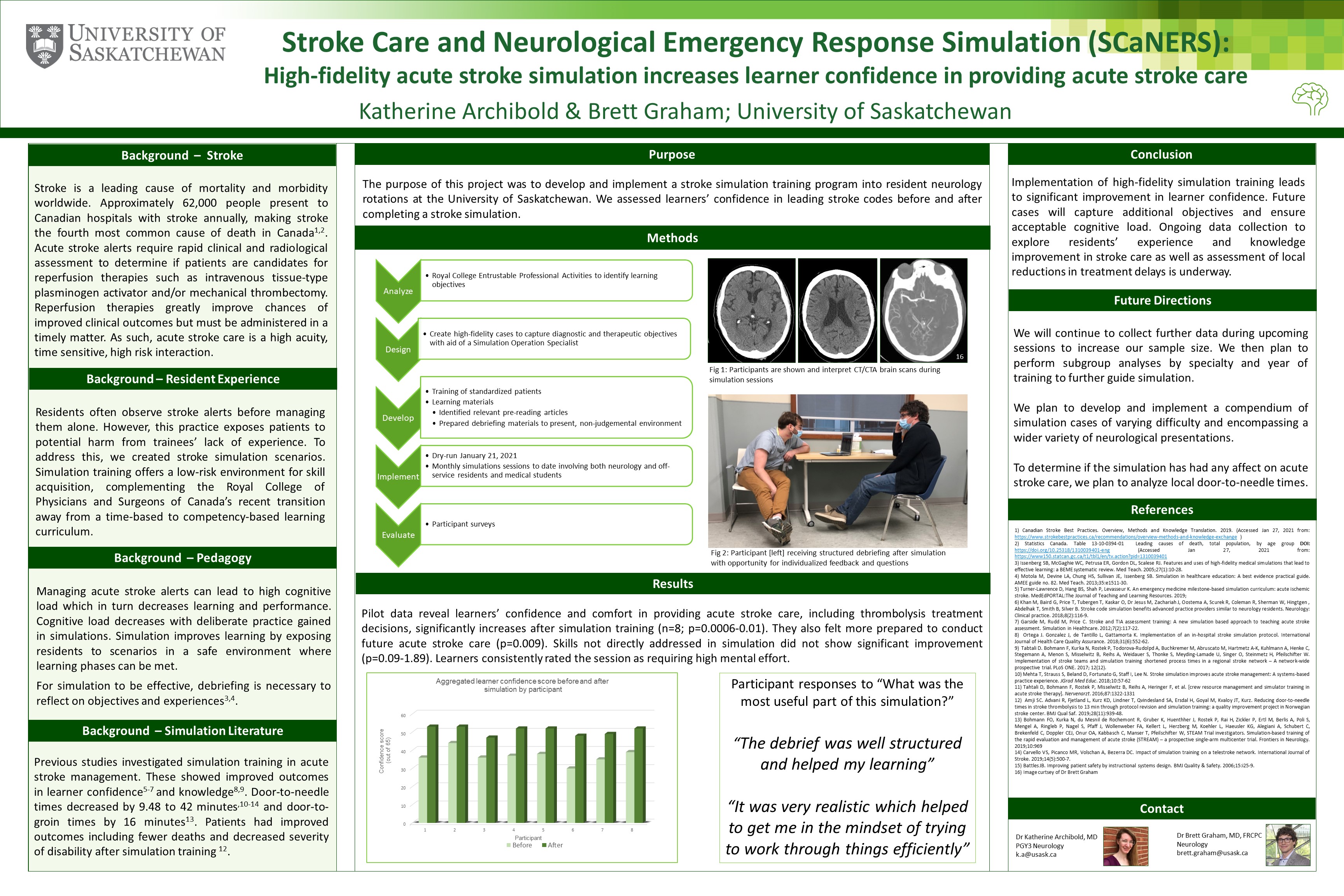
B1.9: Stroke Care and Neurological Emergency Response Simulation (SCaNERS): High-fidelity acute stroke simulation increases learner confidence in providing acute stroke care
Katherine Archibold, Brett Graham
Purpose: Resident physicians often observe stroke alerts before managing them alone, which exposes patients to potential harm from trainees’ lack of experience. Simulation training offers a low-risk environment for skill acquisition. This project assessed learners’ confidence in leading stroke codes before and after completing a stroke simulation training program during neurology rotations at the University of Saskatchewan.
Methods/Approach: High-fidelity simulation cases were developed encompassing several diagnostic and therapeutic goals of acute stroke care. Standardized patients were trained for increased fidelity. Standardized debriefing was given after each session. Pre- and post-simulation surveys captured learner confidence and cognitive load.
Results/Impact: Pilot data reveal learners’ confidence and comfort in providing acute stroke care, including thrombolysis treatment decisions, significantly increases after simulation training (n=8; p=0.0006-0.01). They also felt more prepared to conduct future acute stroke care (p=0.009). Skills not directly addressed in simulation did not show significant improvement (p=0.09-1.89). Learners consistently rated the session as requiring high mental effort.
Conclusion: Implementation of high-fidelity simulation training leads to significant improvement in learner confidence. Future cases will capture additional objectives and ensure acceptable cognitive load. Ongoing data collection to explore residents’ experiences and knowledge improvement in stroke care and assess local reductions in treatment delays is underway.
